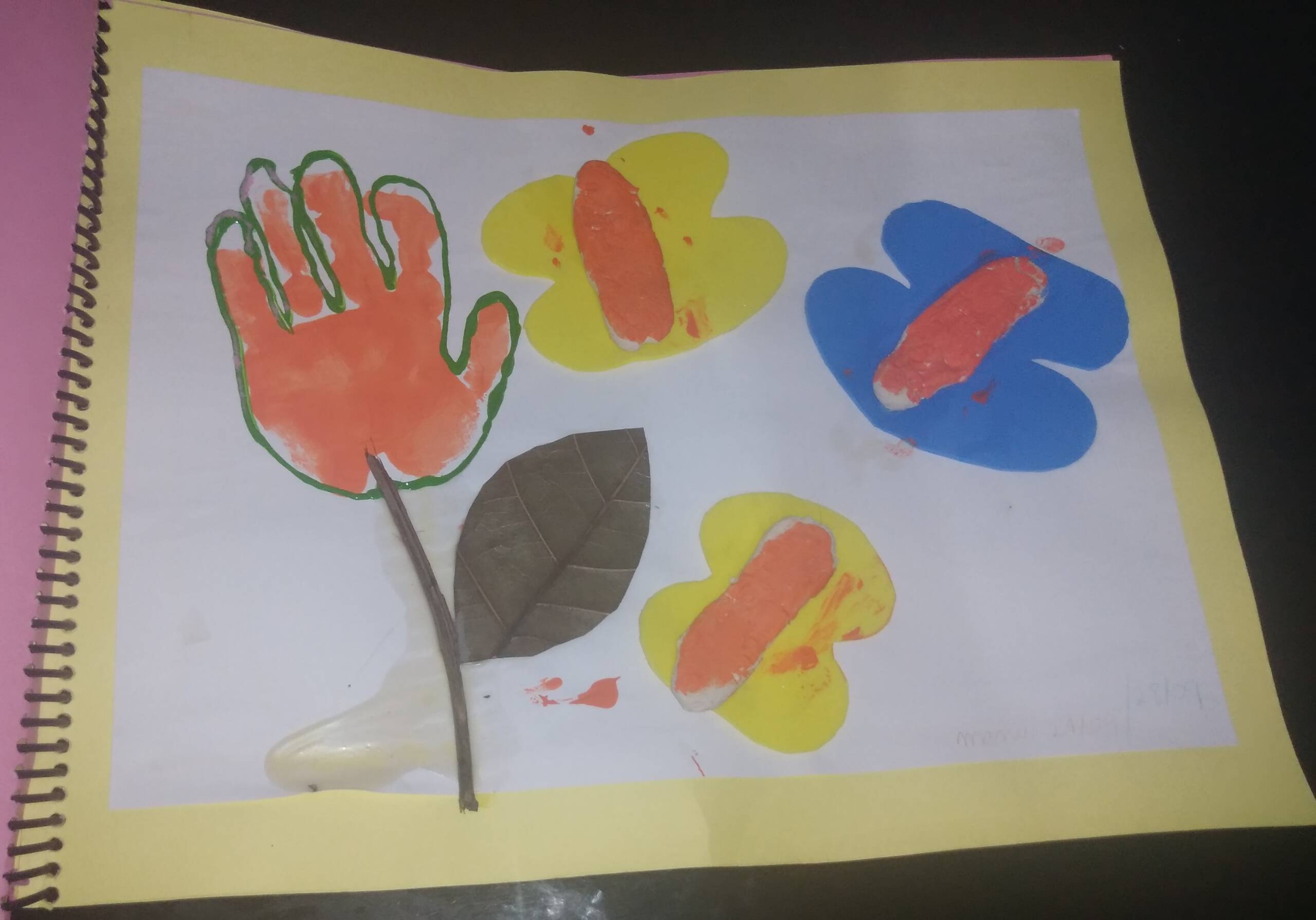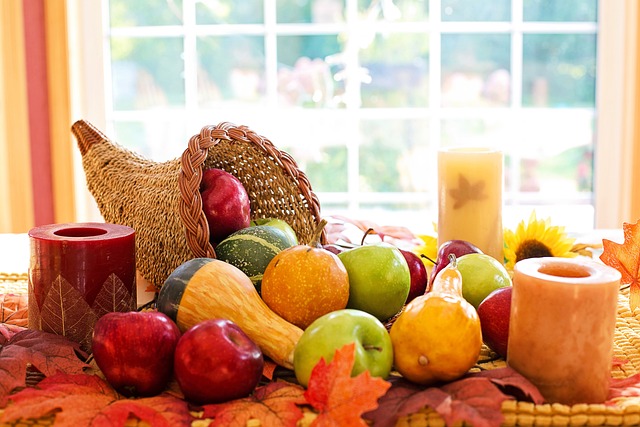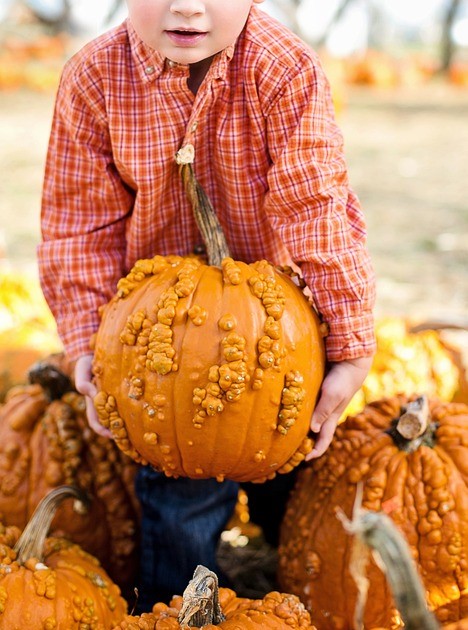Emergent literacy is a concept that breaks with the traditional idea of literacy as the ability to
encode and decode linguistic symbols.
Children with visual impairment associated with other disabilities and with complex
communication needs face major barriers to accessing information and expressing their needs and interests. Many of these children have fragile health conditions, sensory processing difficulties, complex communication needs, a tendency to forget learned habits due to disuse, physical disabilities, cerebral palsy, and learning difficulties. These aspects interfere with their social functioning, their quality of life and reduce their motivation to explore and interact with other people (Chen & Dote-Kwan, 1995).
The emergent literacy process begins in an elementary and early way, including different
communicative modalities and the functional learning of natural sounds and gestures related to
basic communication functions (such as requesting, seeking attention, making choices), in addition to understanding meaning of linguistic symbols. This can favor the increase in receptive and expressive communication (Koenig, 1992; Chen & Dote-Kwan, 1995).
It is believed that both games and other forms of interaction can promote learning and the
construction of different concepts through concrete and meaningful experiences. Sensory
experiences associated with play allow the creation of meaning in a co-active way.
Jan Van Dijk’s co-active approach, where the child carries out activities with the physical support of the adult, allows them to actively construct meaning. With this in mind, this brief experience report had the general objective of providing concrete experiences for children to attribute meaning to different concepts and engage in emerging literacy activities.
Three specific objectives were outlined:
- Value students’ strengths in handling, smelling, experimenting and actively attributing meaning to children’s music
- Encourage positive interactions between the child and other people during the co-active performance of the proposed activities
- Share a proposal to create books of personal experiences using children’s songs, paper, fruits, colored paints and some elements present in the songs
Development
This brief experience report took place at the Benjamin Constant Institute (IBC), located in
Rio de Janeiro/Brazil. The experiences described here are part of a larger research entitled:
Communication and pre-literacy of students with visual impairment associated with other
disabilities. This research was approved by the Ethics Committee and received an Approved Opinion under number 5.905.847 and CAAE 67038722.9.0000.5246.
To start the activities, this teacher made the start signal on the child’s left arm. The child
listened to the music and made movements with his arms and hands. She then manipulated some elements present in each song and was asked to make a two-dimensional representation on paper.
All these actions would occur co-actively between the child and the adult. The child was encouraged to give “yes” and “no” answers through concrete symbols and through natural sounds and gestures or body movements to inform whether or not they wanted to carry out the activity.
Options were offered to choose the preferred instrument between two musical instruments.
Finally, the child was encouraged to answer whether they liked the activity or not. Then the teacher made the end sign on the child’s left arm.
Beginning and ending
It is important to determine the beginning and end of activities in order to prevent things from appearing and disappearing as if “by magic”.
In this experience report, body-tactile signals were used on the children’s’ left arm to represent the beginning and end. This teacher/researcher’s hand slid upwards to represent beginning and slid downwards to represent finished.
Use of concrete “yes” and “no” symbols
Encouraging different responses through concrete “yes” and “no” symbols for the child to express their likes and dislikes and their choices. An X, made of rubberized material (EVA), was used in red to represent “no” and a circle made of this same material, in yellow, to represent “yes”. This was introduced and encouraged to be used with the child and adult interaction.
Emergent literacy activities
Activities with children’s songs, presentation of some concrete elements present in these songs, creation of two-dimensional representations of what the child handled, smelled, tasted and heard.
Various materials were used: colored paints, bond paper, clay, magic sand, shells, seeds and pieces of fruit, dry leaves, beach sand, water, among other materials, depending on the context of each song. It is important to explain that during this activity the children did not eat, they just smelled and tasted small pieces of fruit. It is important to consider their specific comorbidities and serious eating and swallowing problems. It is essential that there is supervision by a speech therapist if foods are used to awaken the child’s sense of smell and taste.
The following activities gave rise to a book of personal experiences made in a concrete and
meaningful way by the children, considering Jan Van Djik’s co-active approach and the physical
support given by the teacher. Each page of this book is the result of an activity involving a
children’s song and some concrete elements present in these songs.
They were meaningful experiences with opportunities for children to try small pieces of fruit, touch different textures, listen to music, handle musical instruments in a co-active way and, above all, actively participate in the creation of their own book of experiences.
Children’s song “the snake doesn’t have feet, the snake doesn’t have hands, how does the snake get on the lemon tree?”, a rubber snake, a lemon, paper and ink.
Image 1 – Snake activity page
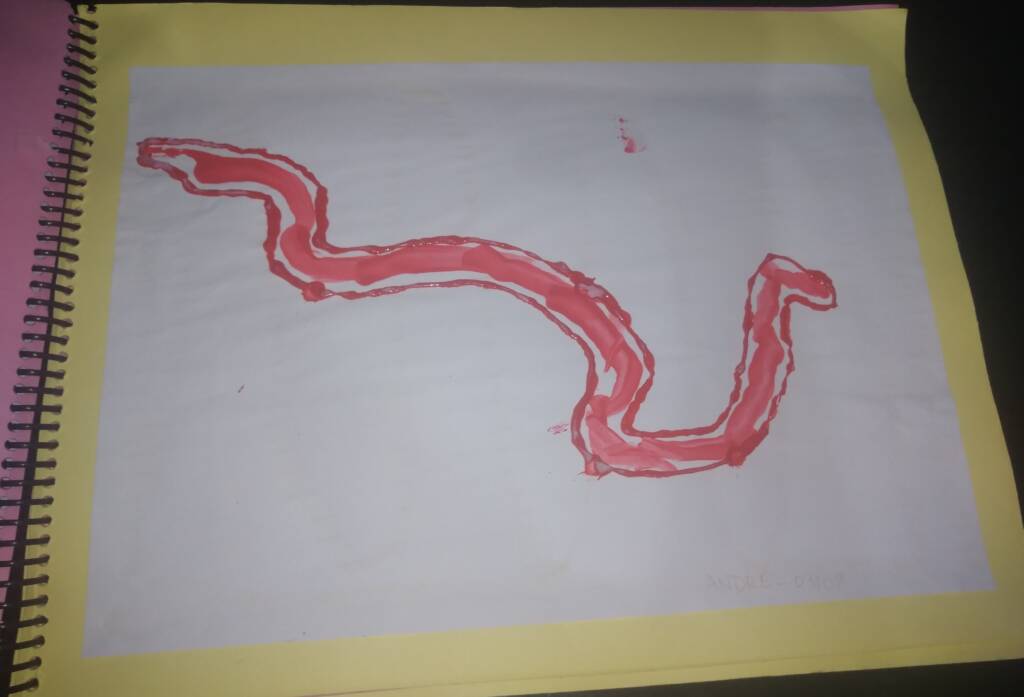
Children’s song “orange already, orange now, pear orange, mom buys it at the market, bahia
orange has a navel, Christmas orange, shock, shock, shock how cool”, an orange, paper, glue and paint.
Image 2 – Orange activity page
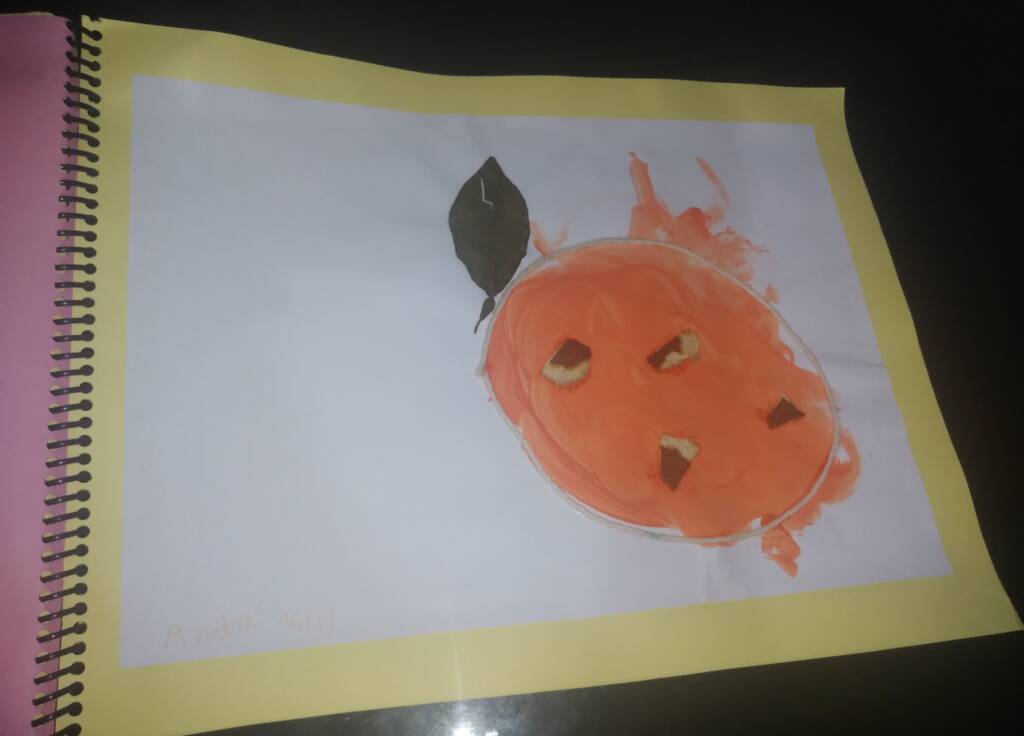
Children’s song “one, two, three little Indians, four, five, six, seven eight nine, little Indians, ten in the little forest”, small dolls to work on body layout, colored paints, glue, paper, modeling clay, water, a toy boat, a water spray bottle.
Image 3 – Indiozinhos activity page
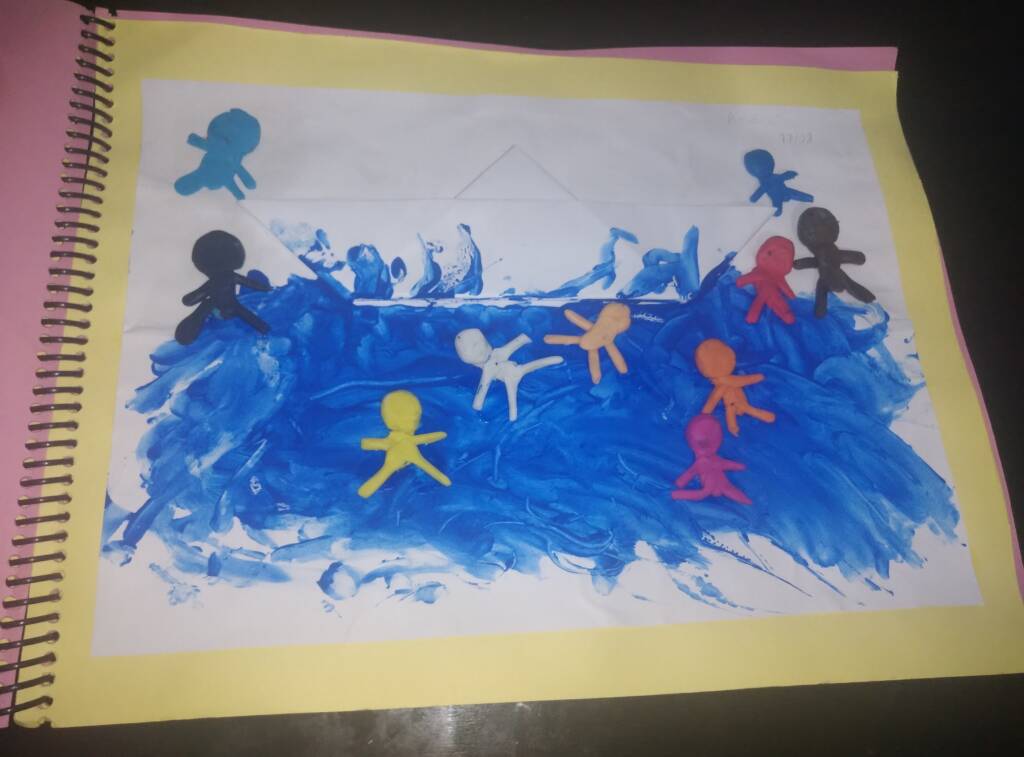
Children’s song “who taught you to swim, who taught you to swim, was, was a sailor, was the fish in the sea, was, was a sailor was NAME OF THE CHILD”, beach sand, water, shells, paper and glue.
Image 4 – Beach sand activity page
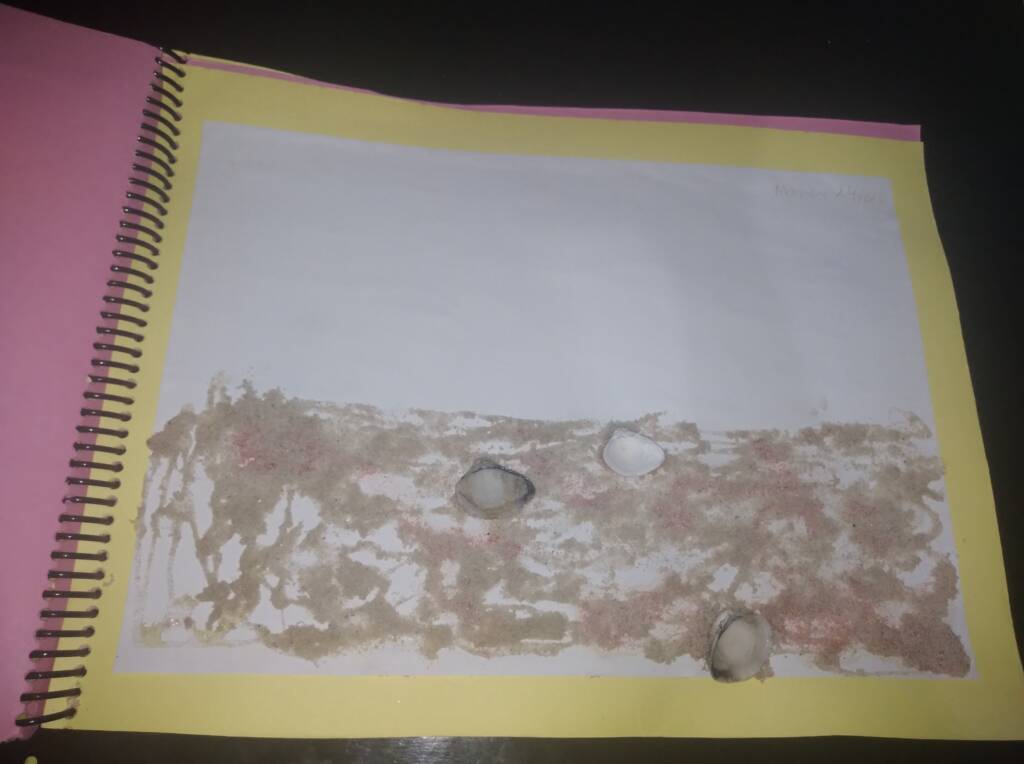
Children’s song “little butterfly, she’s in the kitchen, making chocolate for her godmother, poti,
poti, wooden leg, glass eye, woodpecker’s nose, stick, stick”, wooden spoon, pan, chocolate, twigs and leaves dry.
Image 5 – Butterfly activity page
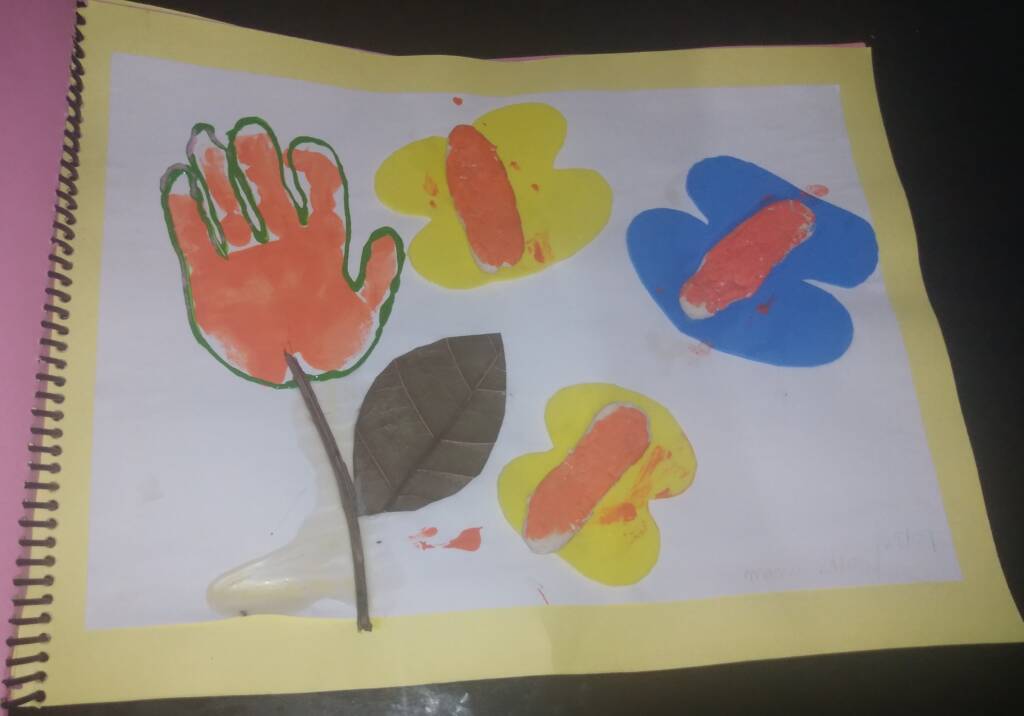
Making the experience personal
Each page of this book contains a two-dimensional representation of the children’s
experiences and a description written in ink and braille in the Portuguese language. It is known that these activities are simple, elementary and carried out with low-cost materials.
Each child’s sensory perceptions are influenced in different ways to process the information that arrives through touch, smell, taste, hearing and visual residue. The way each person perceives external sensations can activate and encourage responses to stimuli. The children actively participated in the creation of their personal experience books in a co-active way, they were involved in emergent literacy contexts through sensory experiences.
The perceptions that give meaning are part of a dynamic and continuous process, through
which people actively participate in the external environment and, based on their past experiences, build the basis for future learning.
References
- Chen, D., & Dote-Kwan, J. (1995). Promoting Emergent Literacy Skills in Toddlers with Visual Impairments. Journal of Visual Impairment & Blindness, v. 112, n. 5, p. 542-550.
- Koenig, Alan J. (1992). A Framework for Understanding the Literacy of Individuals with Visual Impairments. Journal of Visual Impairment & Blindness, v. 86, n. 7, p. 277-284.

